Gambia
Things to DO
Kotu
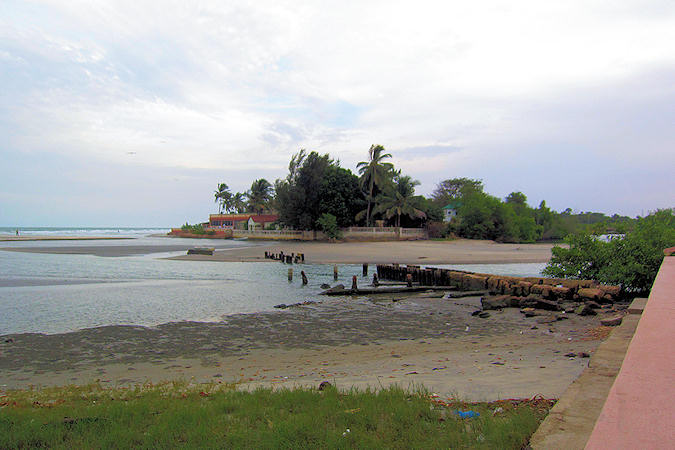 |
|||||
For many tourists, the 10 km strech around Kotu is The Gambia; for others, not at all.
Lined with beaches and built up with a staggering selection of hotels and restaurants, this small zone offers
everything for a relaxing beach holliday. with excelelent infrastructure, wide roads and bustling neighbourhoods,
it shows a chic and fashionable face that's at odds with the rest of the country - wich is why some claim that
the "Real Gambia" only starts where the backyards of the hotels end.
But that's not entirely true.
Indeed the coast is the beating heart of Gambia's tourism, but it pumps energy to the surrounding areas as well.
Only minutes away, small nature reserves, community projects and eco-lodges tempt you on day outings, indicating
exiting new possibilities for tourism in this tiny West African Nation.
About 10 km south of Kotu, the roadcrosses a small bridge to Tanji where the smell of fresh or smoked
fish introduces the community's main activity; a place where small fishing boats still roll in and out of the
sea on the tide.
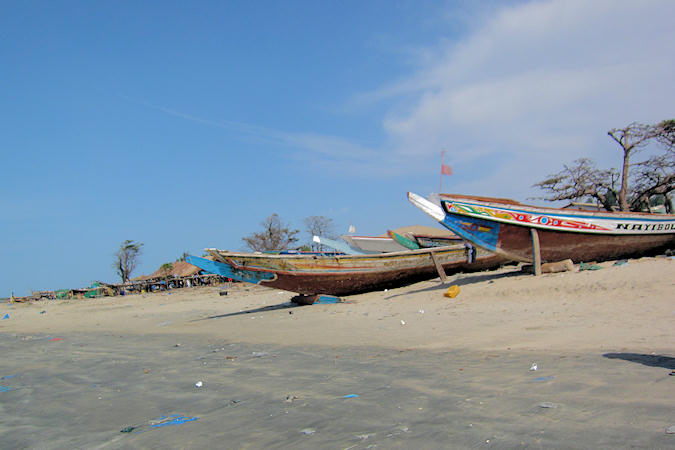 |
|||||
The beach also attracts an excellent selection of birds, including Caspian Tern and
Grey-hooded Gull, which breed on the Bijol islands.
A short but hard to follow track leads to Brufut Woods, a small forest and well-known haunt of bird
lovers.
Over the years the area's woodland has permanently decreased in size due to deforestation, putting at risk
one of Gambia's primery sanctuaries for species such as Verreax's Eagle Owl.
Thanks to an enduring local initiative, the remaining area has been fenced in and equipped with a drinking pool
and hide.
Initially managed by the West African Bird Study Association it is no looked after by the village
of Brufut and is an excellent destination for birdwatchers, as long as the expansion of tourism in the region
doesn't put the area at risk once more.
Dispite its tiny size - 105 hectares - Abuko Nature Reserve is possibly the mightiest of Gambia's
national parks.
On the trail through the gallery forest near the field station, you pass through myriad forms of Gambian scenery
in only a few kilometres, from streches of Guinea savanah to tall bush grasses.
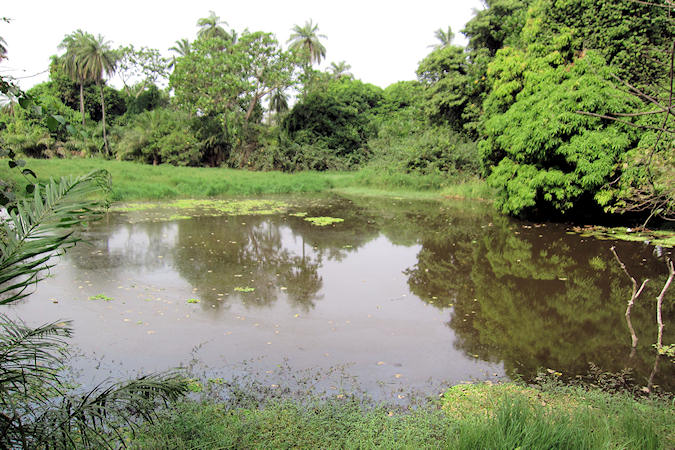 |
|||||
Such varied vegetation supports an equal diversity of wildlife.
Abuko is one of the best places in Gambia for birdwatching, and the Lamin Stream that runs through part of
the reserve is integral in attracting many of more than 250 bird species regularly seen here.
Abuko is about the only place in Gambia where you can observe the Green Turaco and the Violet
Turacos.
Among the 52 mamal species calling Abuko home is the endagered Western Red Colobus.
The reserve is particulary famous for its West African Crocodiles. Unlike those found in the various
sacred pools, the crocodiles of Abuko are completely wild and often enormous - you don't want to get to close
and certainly do not try patting them.
Tendabe
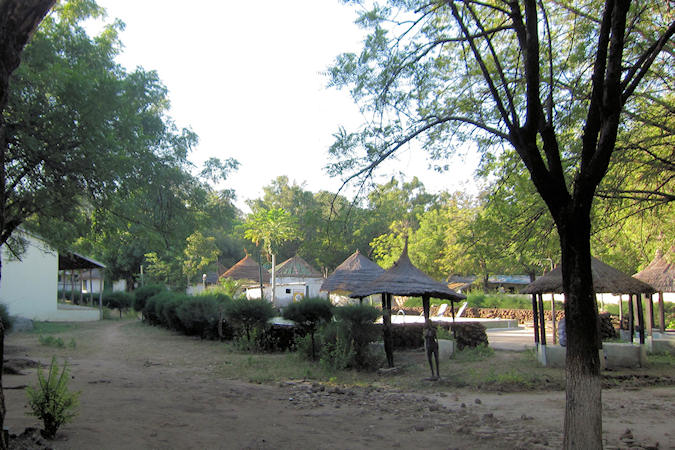 |
|||||
On the southern bank of the Gambia River, the small village of Tendabe is about 165 km upstream from
the coast.
A trip to Tendabe is a regular feature on the upriver schedules of boat and bus tours from the coast, so the
village is not nearly as remote and reclusive as a look on the map would suggest, but it's still unbeatable for
location.
Easily explored on a boat trip from Tendabe, the Baobolong Wetland Reserve is a vast area of
belongs (creeks), lined by thick mangroves that seem to float on the water.
The mangroves in the area are some of the largest in the region, growing over 20m high in places and forming
a virtual forest. This, and the biodiversity of the area, have earned Baobolong the title of a Ramar
Site (Wetland of international importance).
A piroque cruise is the way to travel through Boabolong. In a couple of hours, you can chung along quite a
few of the balongs, ticking birds off the list as you go.
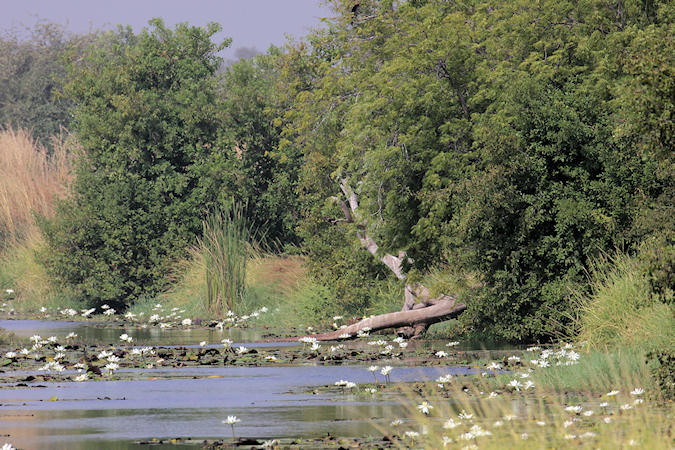 |
|||||
West of Tendabe, Kiang West National Park is one of the largest protected areas in Gambia, and
also the wildest.
Its 11.500 hectares boast a diverse animal population, though they're not easily seen.
Intrepid birdwatchers, of course will have a great time at the park, as some 300 species have been
recorded here.
A great place for vieuwing wildlife is Toubab Kollon Point, a river promontory in the north-east of
the park where a hide grants vieuws across a waterhole that lies 2 km further west.
From this sight, you might be able to observe Baboons, Warthogs and, if you've taken out a
subscription to extreme luck, Duikers and Sitatungas on the grasslands below.
Jajangbureh
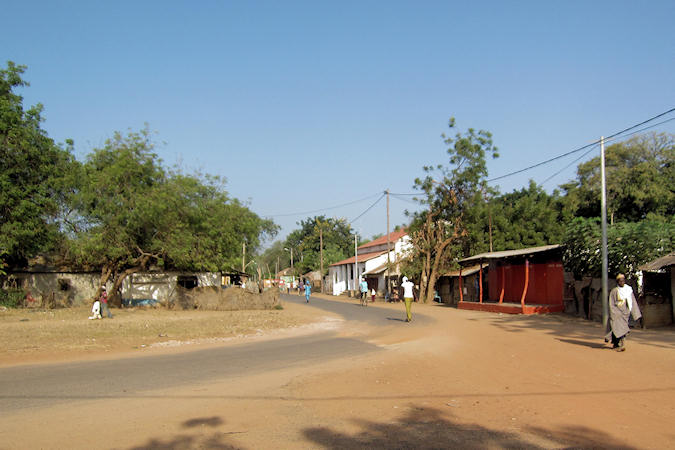 |
|||||
It's setting on the nortern edge of MacCarthy Island, 300 km up the Gambian River, has earned this sleepy
upcountry town the nickname Makaaty - the third label for a place that already lingers undecidedly
between the colonial title Georgetown and the postindependence name Jajanbureh.
Founded by the British in 1823, Janjangbureh was a busy administrative centre and trading hub in the colonial
era.
Today it moves to a sluggish rhythm and falls asleep as soon as nightfall drowns most of the town in darkness.
Birdsong being the local music here.
Its brilliant midriver location makes Janjanbureh a great base for boat trips around the eastern region -
feast your eyes on the abundant greenery that frames the river.